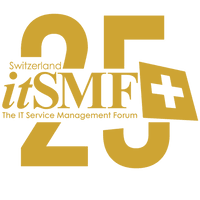Reading time: ~ 7 min.
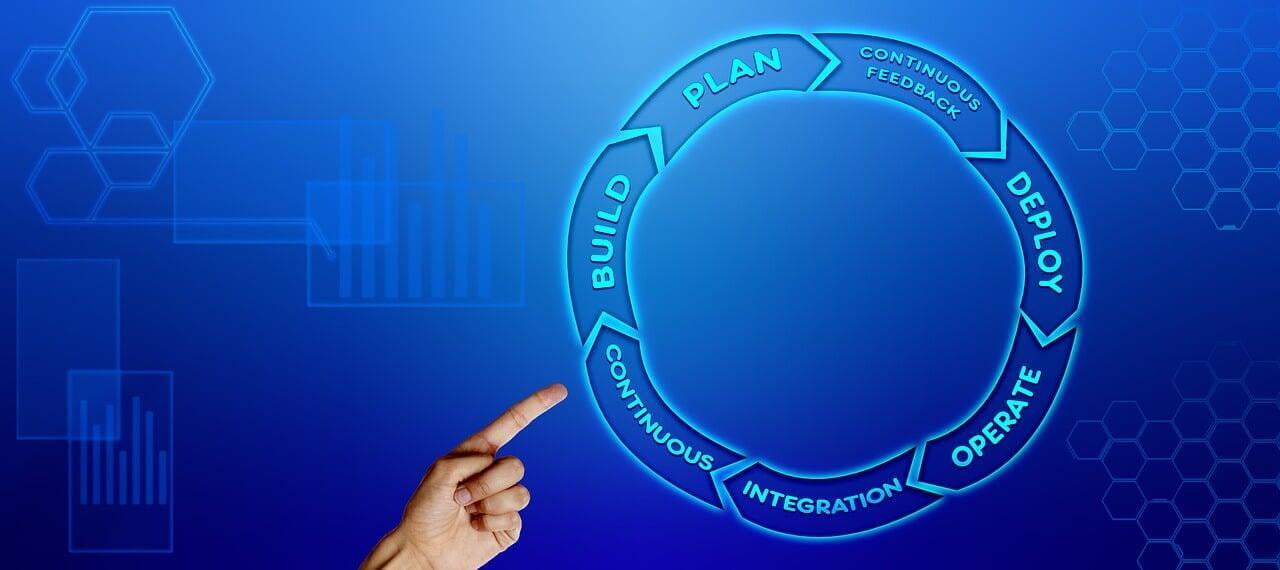
The organizations journey becoming agile
Decide timely, commit late, fail smart and learn fast, deliver bettersolutions and experience to customers, challenge each other to improve.
These are some aspects of agility that attract more and more organizations that want to become agile.
Companies recognize the benefits they can harness from implementing agile ways of working. But they often have practices at odds with and lack a culture that can sustain agility.
So how can we help on this agile journey? How do we nurture an agile mindset and culture in organizations?
Mindset and modernity of agile manifesto
The Agile Manifesto celebrated its 20th Anniversary this year, so is it still relevant to the agile mindset and business agility?
Some details have aged, such as the reference to 2 weeks delivery cycle in the third principle when elite performers now deploy multiple times a day.
The reference to projects in the fifth principle is also at odds with the Lean-inspired focus on Product/Solution, Value Stream, and Flow which now permeates agile thinking.
Many things have changed in the last 20 years. However, the manifesto still feels incredibly modern, often giving a sense of premonition exactly because it focuses on the agile mindset.
«Imposing agile methods introduces a conflict with the values and principles that underlie agile methods.»
Martin Fowler, Agile Manifesto co-author
We actually need more reading, discussing and understanding of the Agile Manifesto. Because a critical problem the agile movement faces is the commercialization of " doing Agile", while ignoring the mindset and culture needed (and don't try to impose a mindset either... ).
The manifesto is not there to guide the scaling of agility to the corporate world. Not even is here to guide leadership practices in the 21st century.
So how can we help share the manifesto with the whole company and drive our agile culture?
👉 The Agile Manifesto for Business Solutions
«True business value lies in solutions. A solution is the assimilation of everything: change, software, processes, hardware, marketing, etc.
I call this full delivery.»
Arie van Bennekum, Agile Manifesto co-author
👉Agile organizations: the invitation to a journey
👉Agile organizations: the invitation to a journey
So reading and discussing the Agile Manifesto is an excellent first step to get the basics of an agile mindset discussed across an organization.
Maybe try and display the Agile Solutions Manifesto poster and invite people to discuss and sign it!
«We are unconvering better ways of developing software by doing it and helping others do it.»
Agile Manifesto
It is also an invitation to share our respective agile experiences, reflect and share what we have learned so far and continue the journey.
«We are unconvering better ways of developing software by doing it and helping others do it.»
Agile Manifesto
Beyond the Agile Manifesto
👉Agile movement influences
👉Agile movement influences
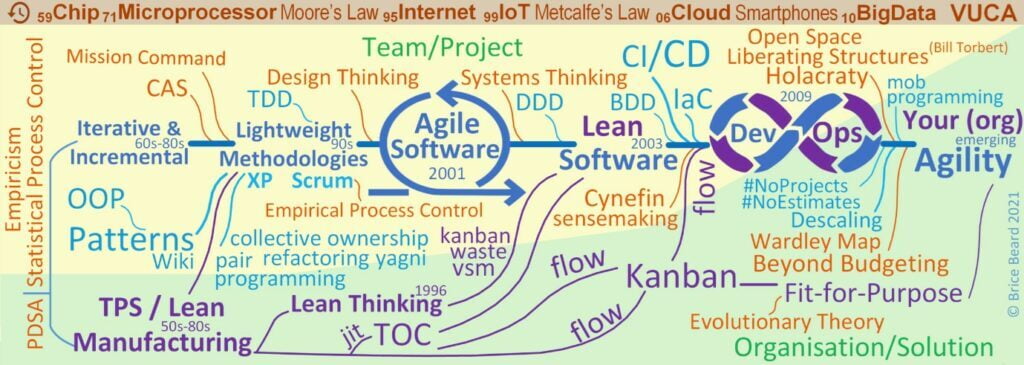
In the Simplified History of the Agile movement influences shown above, the influence of TPS (Toyota Production System), Lean and Kanban on Lean Software and DevOps, enables a shift from teams and projects to organizations and products.
This evolution has brought flow and continuous everything (delivery, monitoring, control, experiment, etc) centre stage, underpinned by continuous learning and improvement.
👉Growth Mindset
👉Growth Mindset
«Ever tried. Ever failed. No matter. Try again. Fail again. Fail better.»
Samuel Beckett (1906-1989)
Agility is about adaptability and response to change, at the personal, team, and organization levels. The agile mindset is foremost a growth mindset that supports experimenting and improving. As Linda Rising explains, our brain changes when we learn new things, so we need to support a mindset that welcomes and grows with change.By encouraging effort and learning, including failing better, you prime that growth mindset. But let's look at the theory of mindset building.
«Ever tried. Ever failed. No matter. Try again. Fail again. Fail better.»
Samuel Beckett (1906-1989)
👉Mindset building theory
👉Mindset building theory
«Mindset theory is about responses to challenges or setbacks.»
David Yeager & Carol Dweck
👉Be Intentional
👉Be Intentional
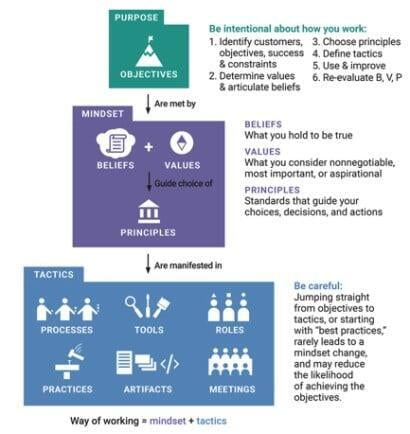
As a leader, it is then possible to start building a culture aligned to your goals (including leadership here from team level to CEO!).
The relevant groups need to come together to work out values, principles, patterns, practices that will help them achieve their target outcomes.
This approach is called Intentional Mindset (Gil Broza). Leadership needs to be intentional about the culture they want to create and be role models.
It is an invitation from the top and commitment at top and bottom to become agile and do agile in an environment fostering transparency, respect, safety and trust: Servant-Leadership supporting active engagement.
👉Apply agility to agility
👉Apply agility to agility
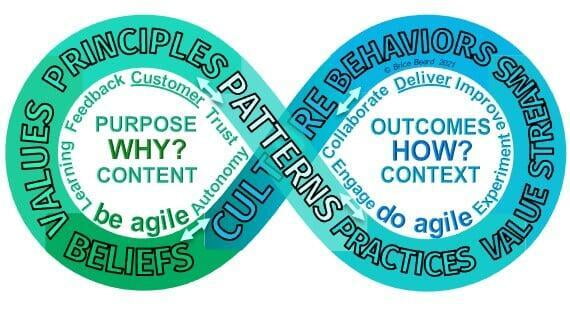
«The bridge from principles to practices is patterns. A pattern can be satisfied with any number of practices, resulting in freedom of choice in terms of practices selected.»
Daniel Mezick

